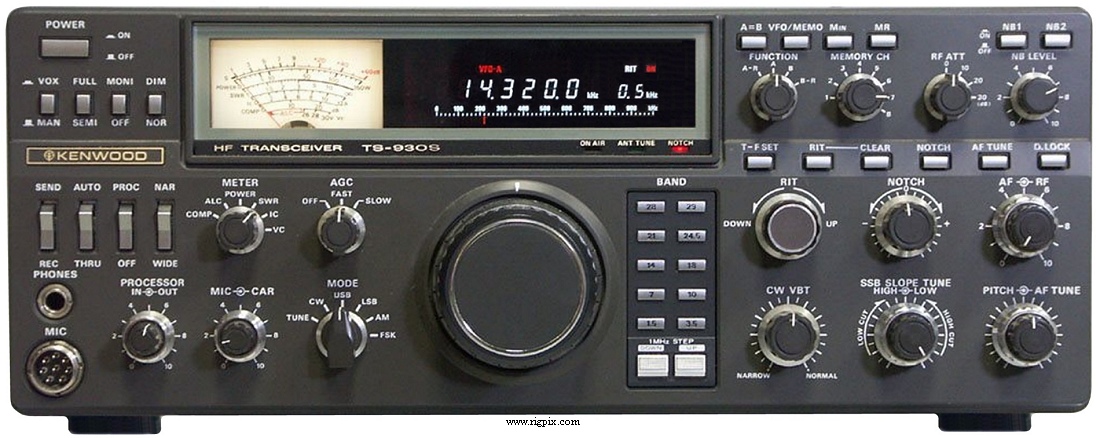http://blog.gerryk.com/
Nice new blog… and I really enjoyed this post:
First proper HF QSO
July 21st, 2007
Now I have a proper dipole up, albeit not all that high, at about 15ft, signals are coming in very strong on all HF bands. Now that could mean a great antenna and matcher on my part, or, is more likely, a mediocre antenna system but huge signals from stations with massive beams and amps in the 100w plus range.
Going on what I was hearing today, though, it seems to be a combination of the two. I heard plenty of 100 watt, G5RV at 60ft people, as you might expect, but also a few putting small powers out, like one gent putting 30w into a random wire who was chatting to another putting 5w into a resonant dipole. Both were 5/6 to 5/8 which boosted my confidence no end, given that my max output with the FT817 is 5w. I listened around the 40m band and, ok, it wasn’t completely crowded, but there was plenty going on all the same. I listened into a few chats and whenever I heard one wrapping up, got ready to pick up the open station after the other went QRT.
Time after time, I waited for a QRZ or CQ and went straight back with my call, but when I unkeyed, generally heard a booming 5/9+ signal, or, more commonly, a few, coming back to the calling station, drowning my little signal completely. Frustrating, you might think, but, to be honest, I enjoyed tuning up and down the band, listening not just to people ragchewing or notching up QSOs, but the atmosphere too. The weather has been almost tropical of late, by which I mean tropical rain rather than tropical sun, and that sort of weather means thunder. Not thunder I could hear with my ears, unless you consider the added hearing aid of about 66ft of wire hanging about 15ft in the air. With that to pick up the discharges, the thunder sounded like feet crunching in gravel, in amongst the ever present hiss.
I didn’t spend a couple of hours throwing rocks into the branches of trees just to listen to clouds blowing off steam, though, I did it to talk to people far away with a tiny amount of power, and in among the big guns it just wasn’t happening. I tried tuning down to the 80m band, but apart from some very weak signals, it was dead as a morgue. I tried 20m. Not anywhere like 40m, but a few here and there. I tried catching loose stations at the end of a QSO, but again and again was rendered inaudible by what one QRP op called a pocketbook op. Those with deep pockets rarely have problems being heard, but, a well placed whisper can be like a shout, so I stick to my rather small guns on the power output. I tried 15m, and it’s pretty silent too, until, up at 21.190MHz I hear a clear voice calling CQ 15! He repeated his call a number of times while I frantically rematched the dipole with the Emtech ZM-2. Finally got a nice low SWR, switched back to USB and heard him still calling CQ. I keyed up, and as slowly and clearly as possible gave my callsign. “QRZ? QRZ, that station.” he said, and I was in. I repeated my call, almost shouting it into the mike. “Echo India 8 Delta Foxtrot Bravo?” he replied. I reread my call, “Echo India 8 Delta RADIO Bravo, Echo India 8 Delta ROMEO Bravo” and this time he got it. “EI8DRB from Charlie 3 3 Portugal Panama” he returned, mixing up the phonetics as hams often do. He gave his QTH as Andorra and his name as Pedro. Andorra! That’s nearly a thousand miles away! On 2.5w and a dipole 15ft off the ground, surrounded by trees, that’s not a bad achievement.
He gave me a report of 3/5 and I gave his as 5/5, we bade each other good DX and 73 and went about our business. He also said I could QSL via QRZ.com, and within the next few days, Pedro in Andorra will be getting a postcard from Galway confirming our brief QSO. I don’t think he fully realises the significance of this to me. To him, I was just another weak station for him to log, for me, it is the beginning of an adventure.


 After being away from my CW paddle for quite some time, I’ve been trying to get back into CW. Over the past few days I’ve been having success with a few QSOs. Tonight I went down to 80M and had a QSO with Ed,
After being away from my CW paddle for quite some time, I’ve been trying to get back into CW. Over the past few days I’ve been having success with a few QSOs. Tonight I went down to 80M and had a QSO with Ed, 

